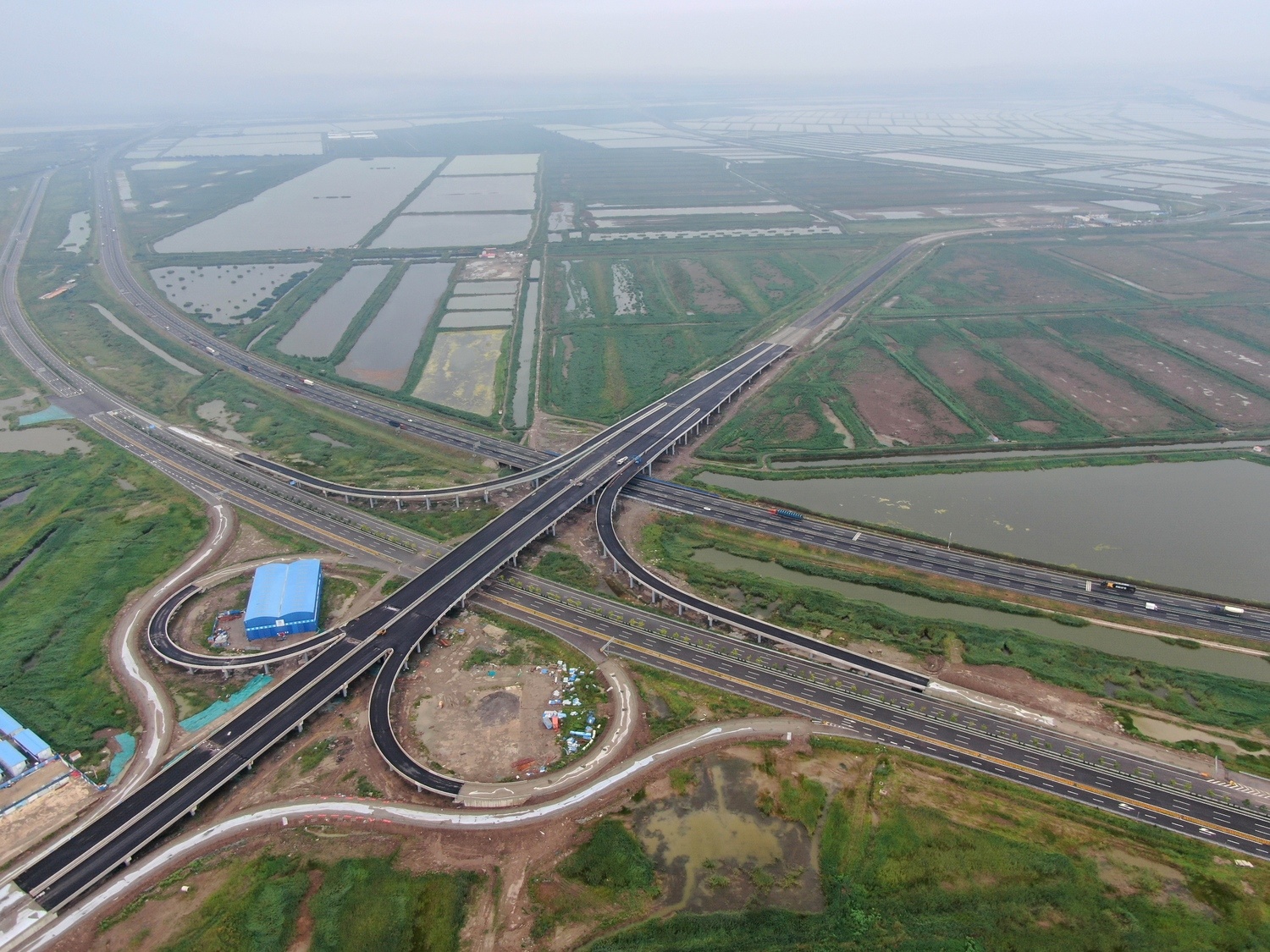How Advanced Steel Cable Suspension Bridges Enhance Urban Infrastructure
May 05,2025

How Advanced Steel Cable Suspension Bridges Enhance Urban Infrastructure
Table of Contents
- 1. Introduction: The Role of Bridges in Urban Development
- 2. Understanding Steel Cable Suspension Bridges
- 3. Historical Evolution of Suspension Bridges
- 4. Engineering Advancements in Suspension Bridge Design
- 5. Benefits to Urban Infrastructure
- 5.1 Economic Boost and Development
- 5.2 Environmental Impact and Sustainability
- 5.3 Enhanced Connectivity and Traffic Management
- 6. Case Studies of Advanced Steel Cable Suspension Bridges
- 7. The Future of Urban Bridges: Innovations on the Horizon
- 8. Conclusion: The Lasting Impact of Suspension Bridges
- 9. FAQs
1. Introduction: The Role of Bridges in Urban Development
Bridges have long been a crucial aspect of urban development, serving as vital connectors between different parts of a city. Among the various types of bridges, **advanced steel cable suspension bridges** stand out for their unique design and engineering prowess. These structures not only provide transportation solutions but also symbolize innovation and progress in urban infrastructure.
In this article, we delve into how these advanced bridges are reshaping urban landscapes, enhancing connectivity, and contributing to economic and environmental sustainability.
2. Understanding Steel Cable Suspension Bridges
Steel cable suspension bridges are architectural feats that utilize high-tensile steel cables to support the bridge deck. The design allows for longer spans with fewer supporting columns, making them ideal for crossing wide bodies of water or deep valleys where traditional bridges might be impractical.
The main components of a suspension bridge include:
- **Main cables**: These run between towers and carry the weight of the bridge deck.
- **Hangers**: Vertical cables that connect the main cables to the bridge deck.
- **Anchorage**: The solid structures at either end that secure the bridge and prevent it from swaying.
This innovative design not only enhances aesthetic appeal but also optimizes material efficiency, making it a popular choice in urban settings.
3. Historical Evolution of Suspension Bridges
The concept of suspension bridges dates back centuries, with early examples found in ancient civilizations. However, modern advancements in materials and engineering have revolutionized their design:
- **Early Developments**: The first modern suspension bridge, the Menai Suspension Bridge in Wales, completed in 1826, set the stage for future designs.
- **20th Century Innovations**: The introduction of steel as a primary construction material in the 19th century marked a significant shift, allowing for more extensive and durable structures.
- **Contemporary Designs**: Today’s suspension bridges incorporate cutting-edge technology, including computer-aided design and advanced materials, further pushing the boundaries of what is possible.
These developments have led to bridges that are not only functional but also iconic landmarks within urban environments.
4. Engineering Advancements in Suspension Bridge Design
Engineering advancements have played a vital role in the evolution of suspension bridges. Key innovations include:
- **High-Performance Materials**: The use of high-strength, low-weight steel has significantly enhanced the load-bearing capacity and durability of modern bridges.
- **Dynamic Analysis Techniques**: Engineers now employ sophisticated modeling techniques to predict and analyze how bridges will respond to various stressors, such as wind and seismic activity.
- **Smart Technology**: The integration of sensors and monitoring systems allows for real-time assessment of structural health, ensuring longevity and safety.
These advancements not only improve the performance of the bridges themselves but also enhance safety and maintenance protocols.
5. Benefits to Urban Infrastructure
Advanced steel cable suspension bridges offer numerous benefits that extend beyond mere transportation. Here are some critical advantages:
5.1 Economic Boost and Development
The construction of suspension bridges can stimulate local economies. They attract investments, promote tourism, and facilitate the movement of goods and people. By enhancing accessibility, these bridges often lead to the development of surrounding areas, creating jobs and boosting local businesses.
5.2 Environmental Impact and Sustainability
Sustainability is a growing concern in urban planning. Advanced steel cable suspension bridges are designed with environmental considerations in mind. Their efficient use of materials reduces the carbon footprint associated with construction. Moreover, many modern bridges are equipped with features to promote ecological balance, such as green spaces or pedestrian pathways.
5.3 Enhanced Connectivity and Traffic Management
Urban areas often struggle with traffic congestion. Suspension bridges can alleviate this issue by providing efficient routes that connect key urban areas. This improved connectivity reduces travel time, decreases vehicle emissions, and enhances the overall quality of life for residents.
6. Case Studies of Advanced Steel Cable Suspension Bridges
To further illustrate the impact of these structures, let's examine a few notable examples of advanced steel cable suspension bridges:
- **Golden Gate Bridge, USA**: An iconic symbol of San Francisco, this bridge not only offers breathtaking views but also serves as a critical transportation link for millions.
- **Akashi Kaikyō Bridge, Japan**: The longest suspension bridge in the world, it showcases the engineering prowess and can withstand earthquakes, making it a marvel of modern technology.
- **Millennium Bridge, UK**: Noted for its innovative design, this pedestrian bridge enhances urban mobility while providing a stunning visual centerpiece along the Thames.
These case studies highlight how advanced steel cable suspension bridges can be both functional and iconic, serving as critical infrastructure while enhancing the urban landscape.
7. The Future of Urban Bridges: Innovations on the Horizon
The future of urban bridges looks promising, with numerous innovations on the horizon:
- **Smart Bridges**: The incorporation of IoT (Internet of Things) technology will allow for smarter, more responsive bridge systems that can adapt to traffic patterns and environmental conditions.
- **Sustainable Materials**: Researchers are developing eco-friendly materials that could further reduce the environmental impact of bridge construction and maintenance.
- **Modular Designs**: The rise of modular construction techniques may lead to faster and more cost-effective bridge projects, enhancing the ability to address urban infrastructure needs promptly.
As cities continue to grow, these advancements will be vital in meeting the demands of modern urban environments.
8. Conclusion: The Lasting Impact of Suspension Bridges
In summary, advanced steel cable suspension bridges are not merely functional structures; they are essential components of urban infrastructure that offer a multitude of benefits. From enhancing connectivity and supporting economic development to promoting sustainability, their impact is profound and far-reaching.
As we look to the future, the innovations in bridge design and engineering promise to further enhance our urban landscapes, ensuring that these architectural marvels continue to play a pivotal role in the development of modern cities.
9. FAQs
1. What is the main advantage of steel cable suspension bridges over traditional bridges?
Steel cable suspension bridges allow for longer spans without the need for numerous supporting columns, making them ideal for crossing wide bodies of water and offering aesthetic appeal.
2. How do these bridges contribute to economic development?
By improving connectivity, these bridges facilitate the movement of goods and people, attracting investments and stimulating local economies.
3. Are modern suspension bridges environmentally friendly?
Yes, many modern suspension bridges are designed with sustainability in mind, utilizing high-performance materials and incorporating features that promote ecological balance.
4. What innovations are shaping the future of suspension bridges?
Innovations such as smart technology, sustainable materials, and modular designs are leading the trend toward more efficient and environmentally friendly bridge construction.
5. Can suspension bridges withstand natural disasters?
Yes, modern engineering techniques enable suspension bridges to be designed to withstand seismic activity and high winds, ensuring safety and durability even in extreme conditions.
PREVIOUS:
Contact Us
E-mail :
183597530@qq.com
WhatsApp:
+86-13810577811
Address:
No. 4 Fengzhi Road, Binhe New District, Baotou Rare Earth High tech Zone, Inner Mongolia Autonomous Region









